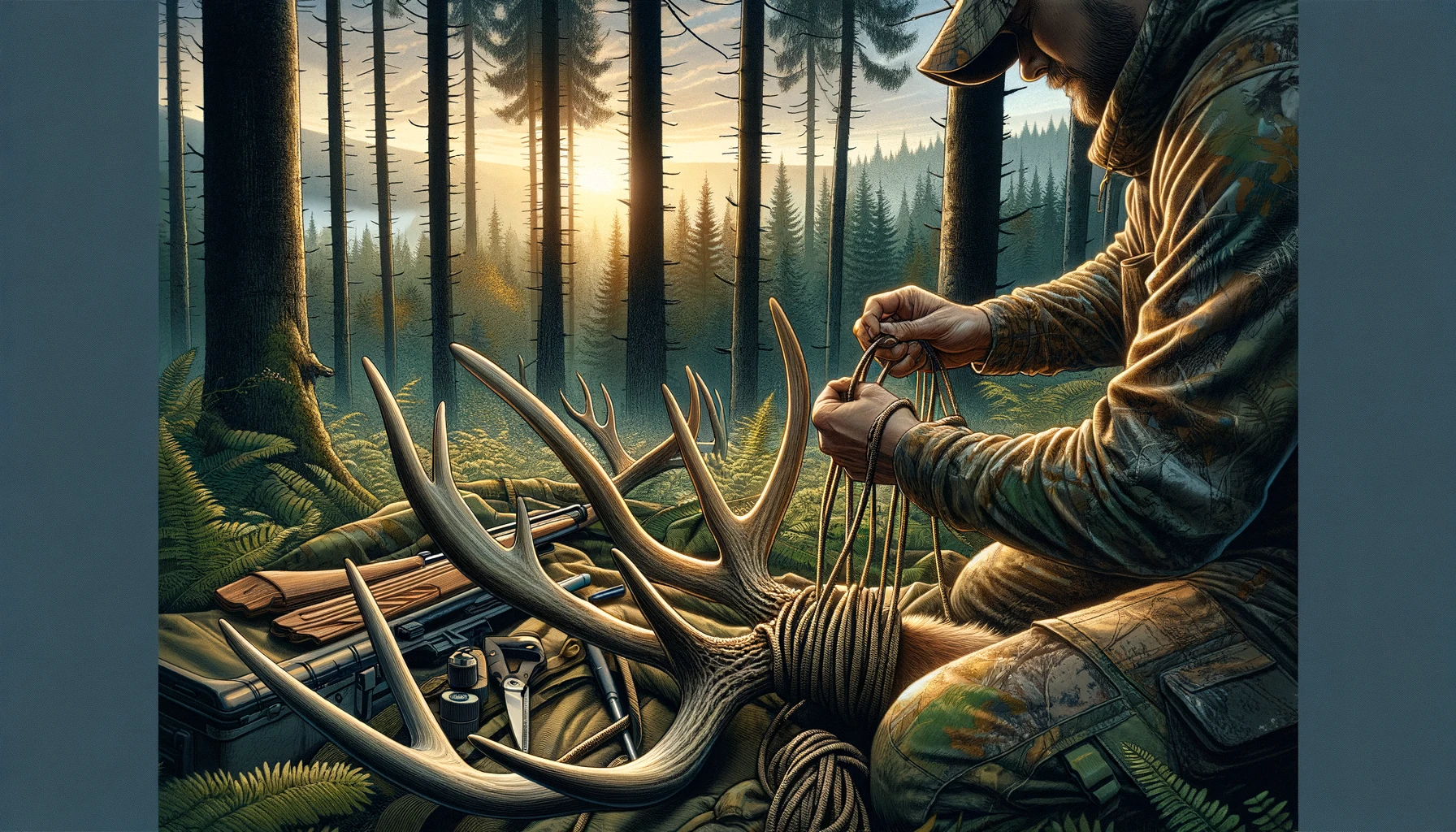
Table of Contents
In the heart of the wilderness, the sound of rattling antlers cuts through the silence, signaling the age-old dance of dominance among bucks. For hunters, replicating this sound is both an art and a strategic tool, a way to draw in curious or competitive bucks during the rut. This comprehensive guide will lead you through the process of creating your very own rattling antlers, transforming shed antlers into an instrument of the wild that calls out to the spirit of the forest.
Begin by choosing two antlers that, when combined, mimic the natural clashing of bucks. They should be symmetrical in weight and size to maintain balance and authenticity in sound production.
Using your hand saw, trim the antlers if necessary. The goal is to create a comfortable grip that mimics the points where bucks naturally lock antlers. Ensure the tines are preserved as much as possible to maintain the variety of sounds.
Once trimmed, use sandpaper to smooth any sharp or rough edges. This not only makes the antlers safer to handle but also prevents unwanted noise that could detract from the realism of the sound.
Drill a hole near the base of each antler, ensuring it is wide enough for the rope or strap. This step requires precision, as the placement of the holes will affect the ease of handling and the fluidity of the rattling motion.
Thread the rope or leather strap through the holes, securing the antlers together. The connection should be firm yet allow the antlers to move freely enough to simulate the dynamic nature of a buck fight.
For those inclined, now is the time to add personal touches with camouflage tape or paint. Whether to blend in with the environment or simply to add a personal flair, this step is where your creativity shines.
With your rattling antlers ready, practice varying the intensity, speed, and rhythm of your rattles to cover a spectrum of scenarios—from gentle sparring sessions to full-on battles for dominance. Observation and adaptation are key, as is timing your rattles to coincide with the peak of the rut for maximum effect.
Creating your own rattling antlers is not just about adding another tool to your hunting arsenal; it’s about connecting with the primal rituals of the wild, understanding the language of the forest, and stepping into the role nature has played out for millennia. With your DIY rattling antlers in hand, you are not just a hunter; you are a conductor of the wilderness symphony, capable of calling forth the majestic deer from the depths of their domain.
Shed antlers can be found in the woods during late winter and early spring or purchased from specialty hunting stores or online.
A durable material that can withstand the elements and frequent use is best. Nylon rope or a thick leather strap are excellent choices.
Practice is key. Listen to recordings of real bucks fighting and try to replicate the sound. Adjust the force and speed of your rattling to match.
The pre-rut and rut phases, generally in the late fall, are when bucks are most responsive to the sound of rivals.
Regularly check for wear and tear, especially on the connection points. Store them in a dry place to prevent mold or mildew growth on natural materials.
Through the meticulous crafting and strategic use of your rattling antlers, you not only enhance your hunting experience but also pay homage to the timeless traditions that bind humanity to nature.
You can also visit : Unveiling the Secrets of Post-Rut Antler Rattling
Gun owners regularly hear that maintaining their firearm is essential, but many still wonder exactly…
When handling any firearm whether it’s a hunting rifle, shotgun, handgun, or even a crossbow—reliability…
Jerking the trigger is one of the most common accuracy problems pistol shooters face. Whether…
Keeping your handgun clean is one of the most important responsibilities you have as a…
Archery has evolved dramatically over thousands of years, yet one debate continues to spark curiosity…
When you’re setting up a long-range rifle scope, one of the most important decisions you’ll…
This website uses cookies.